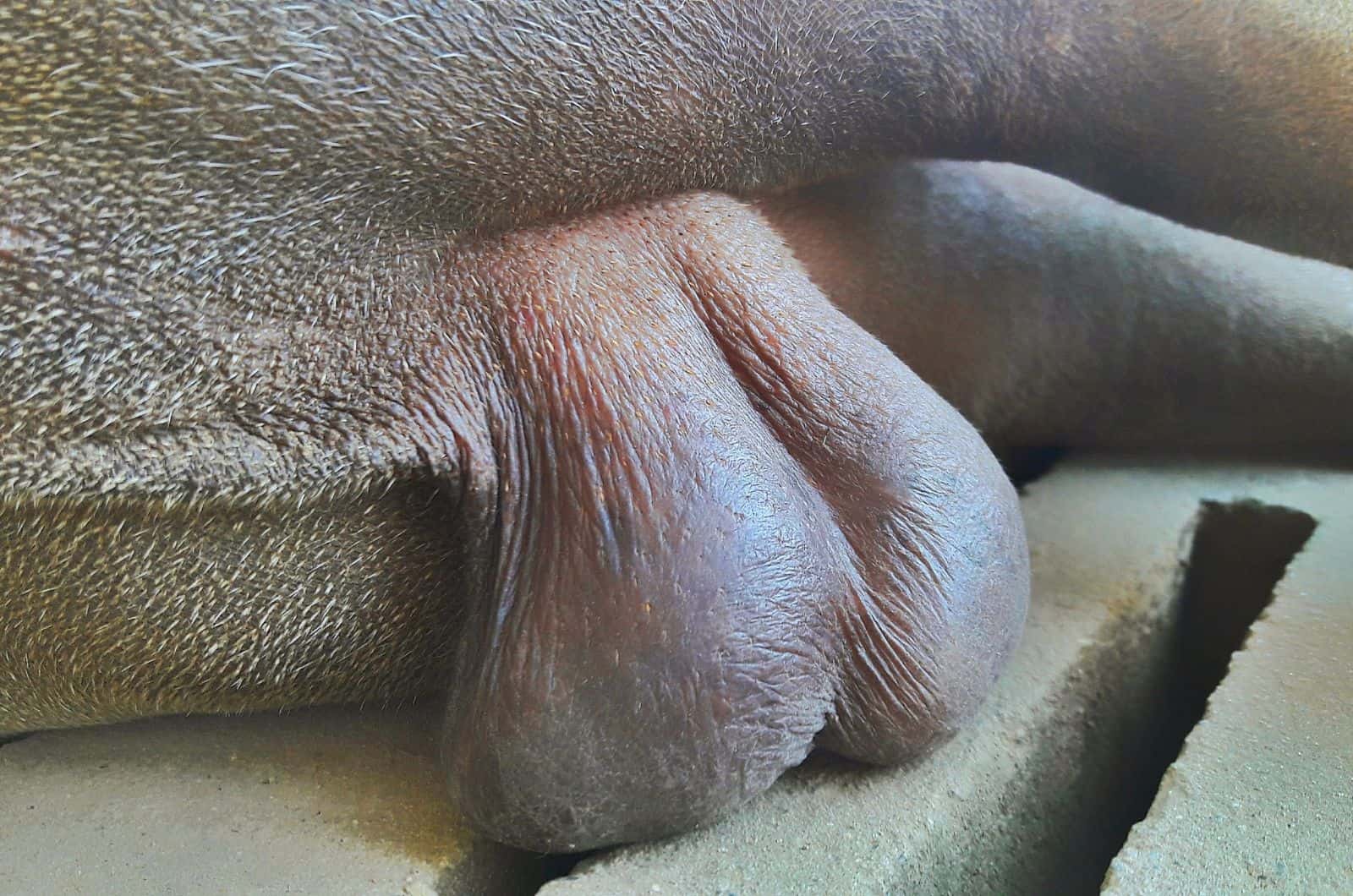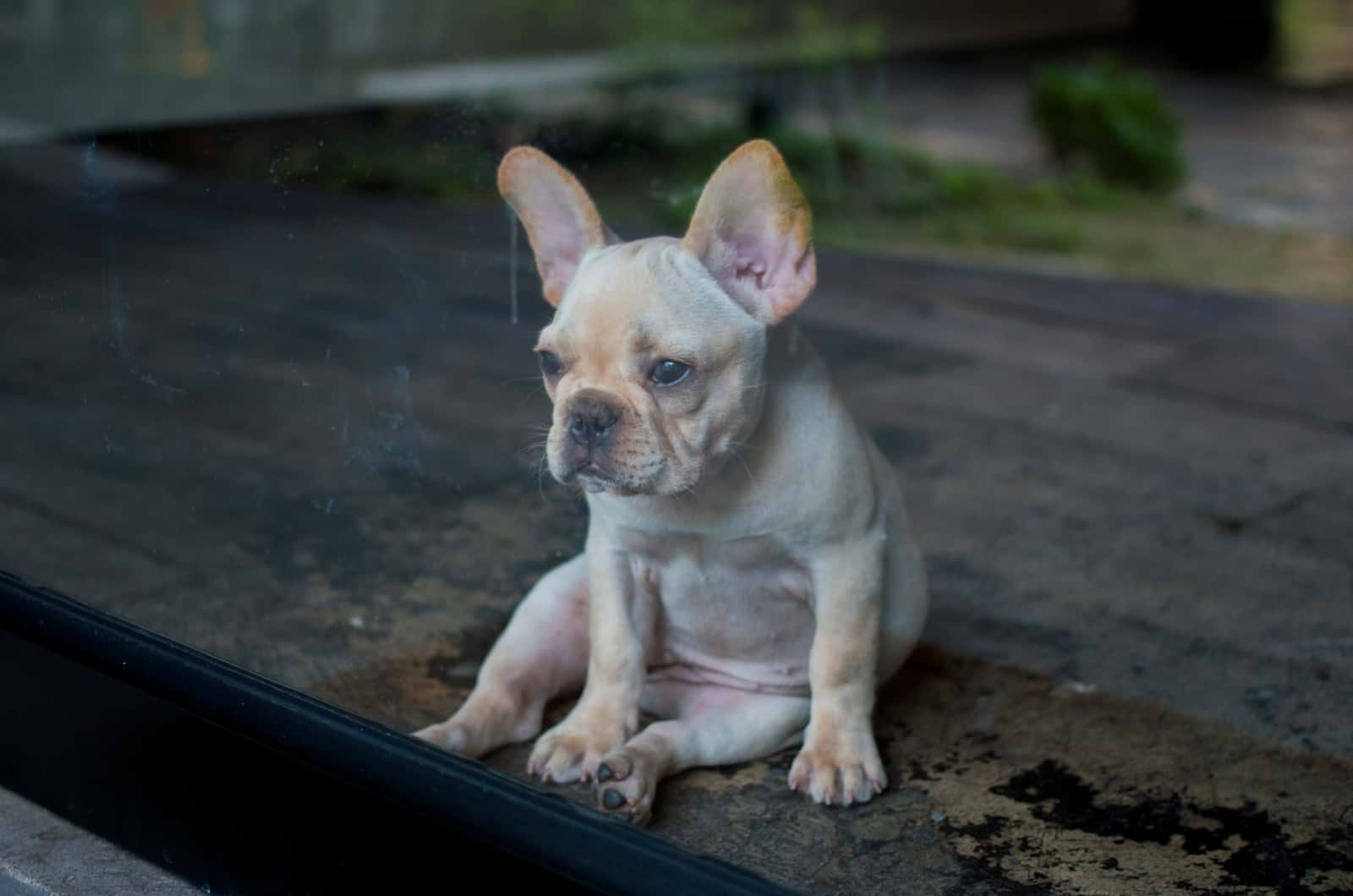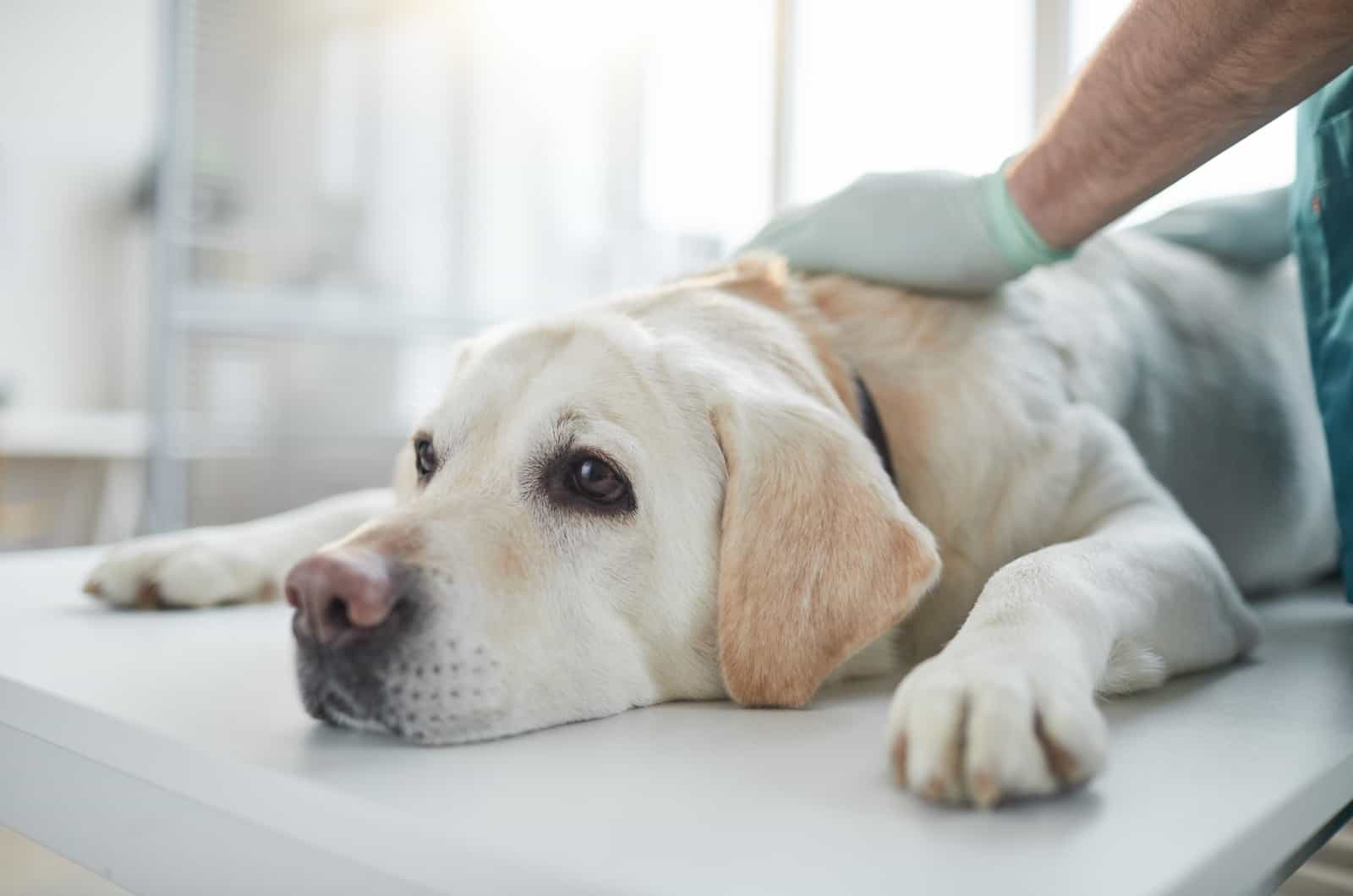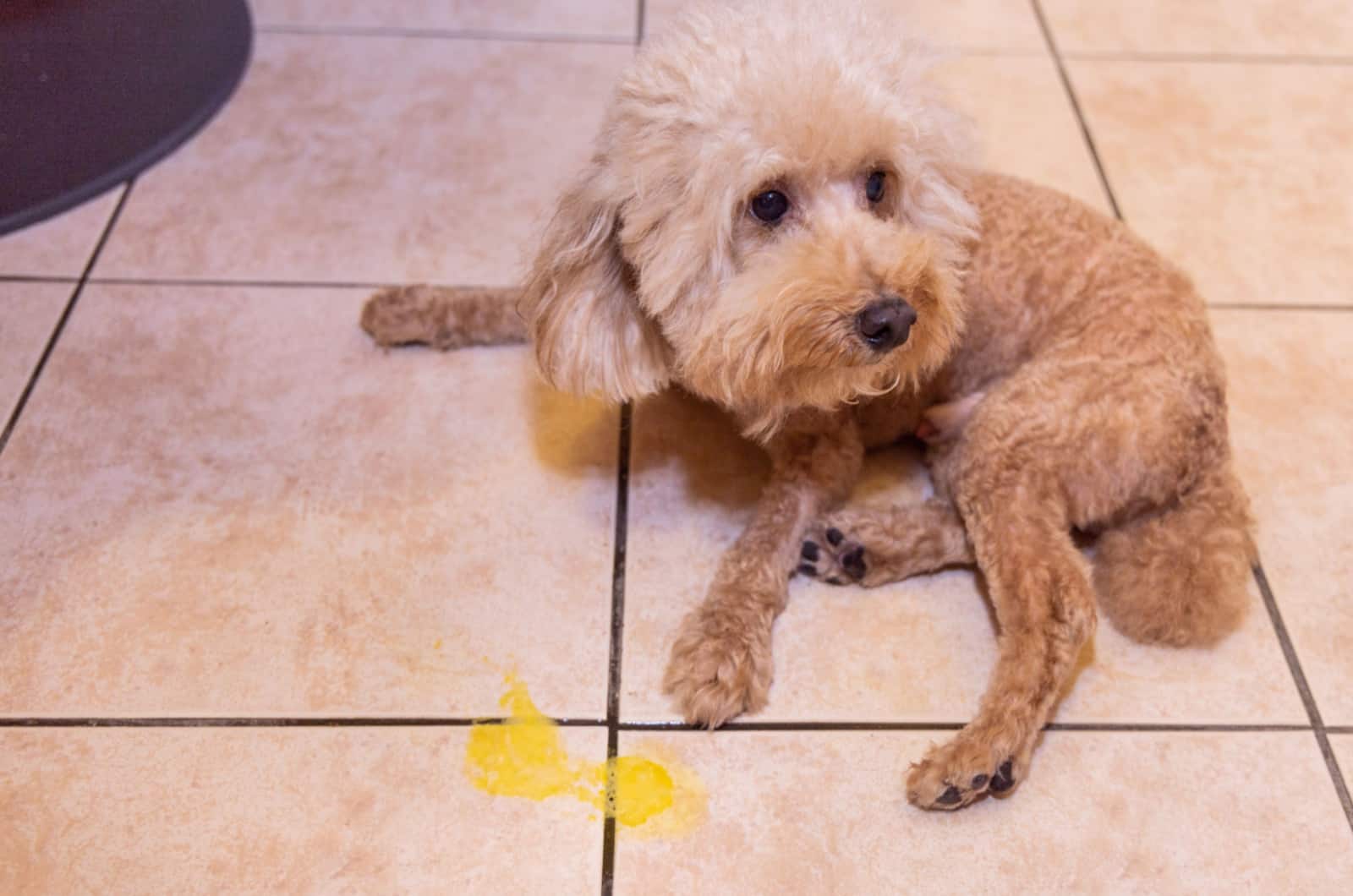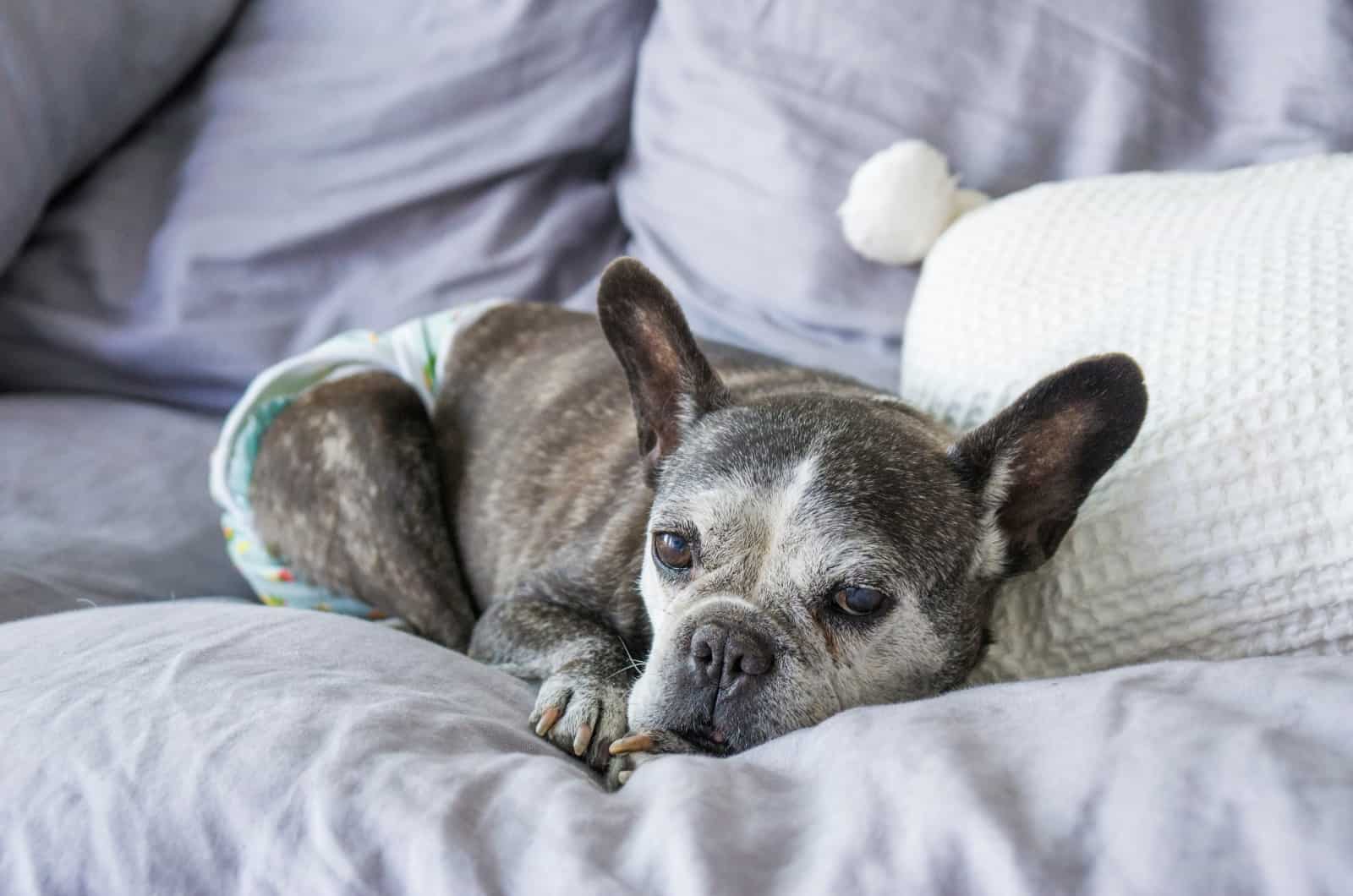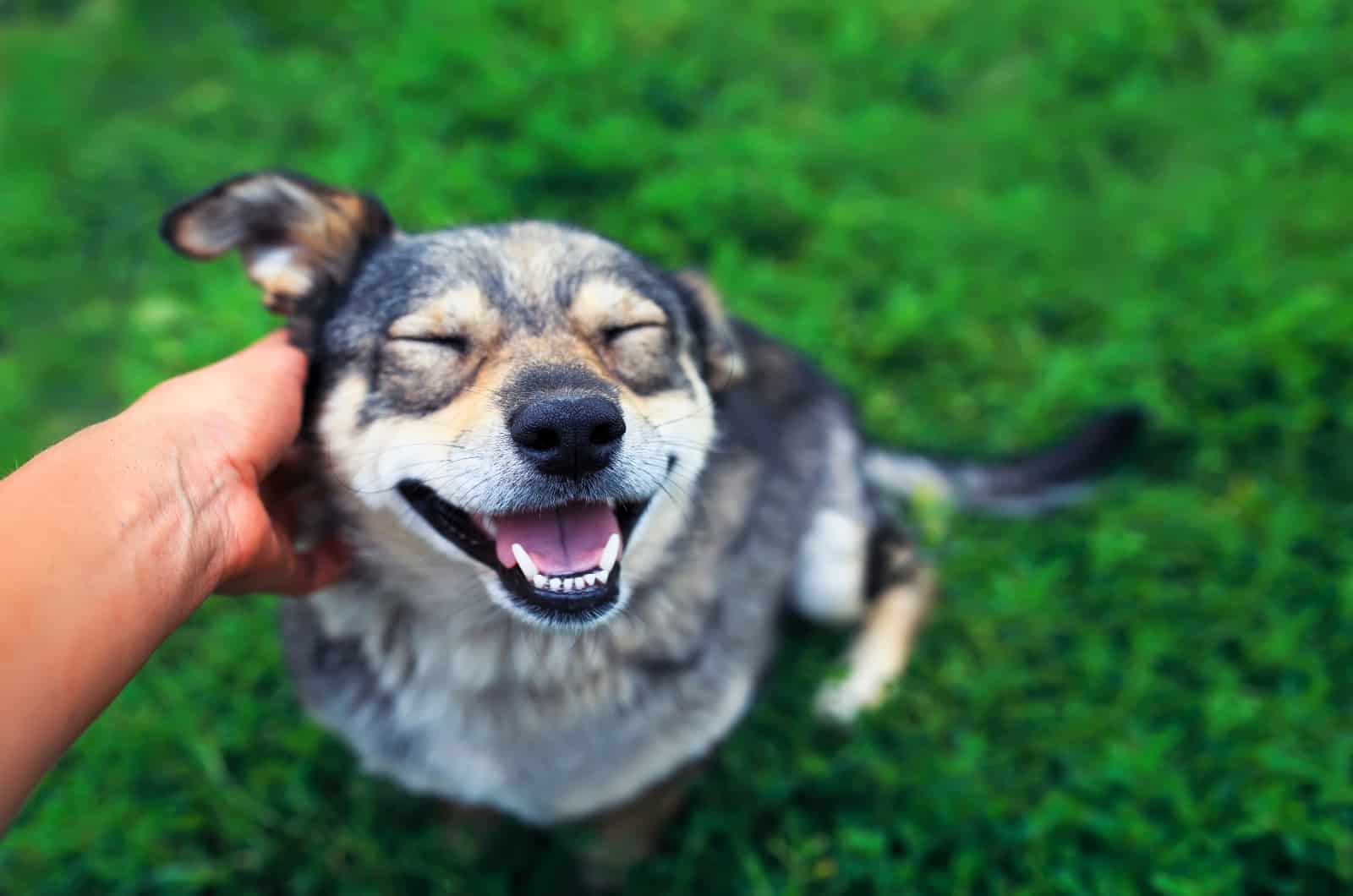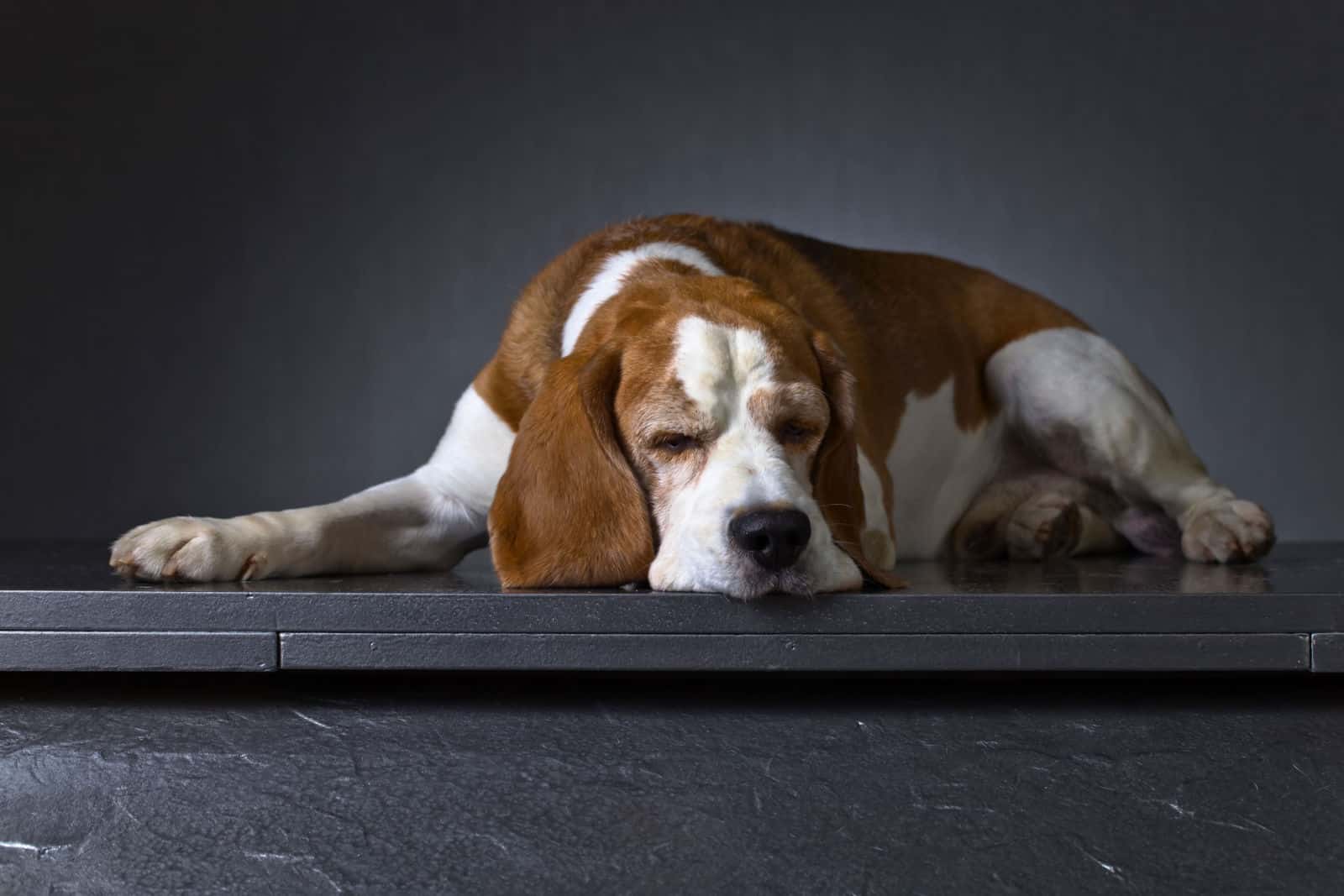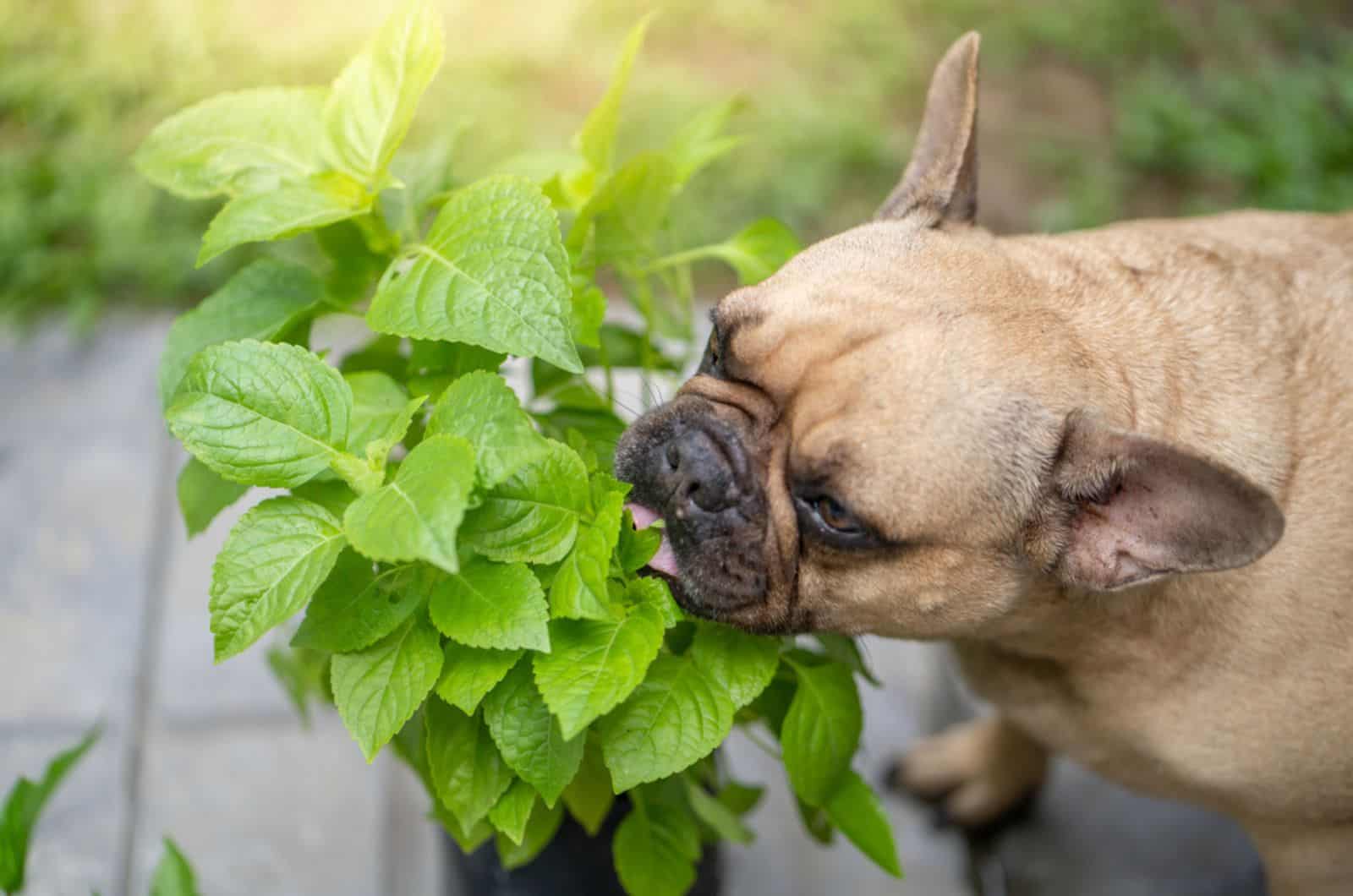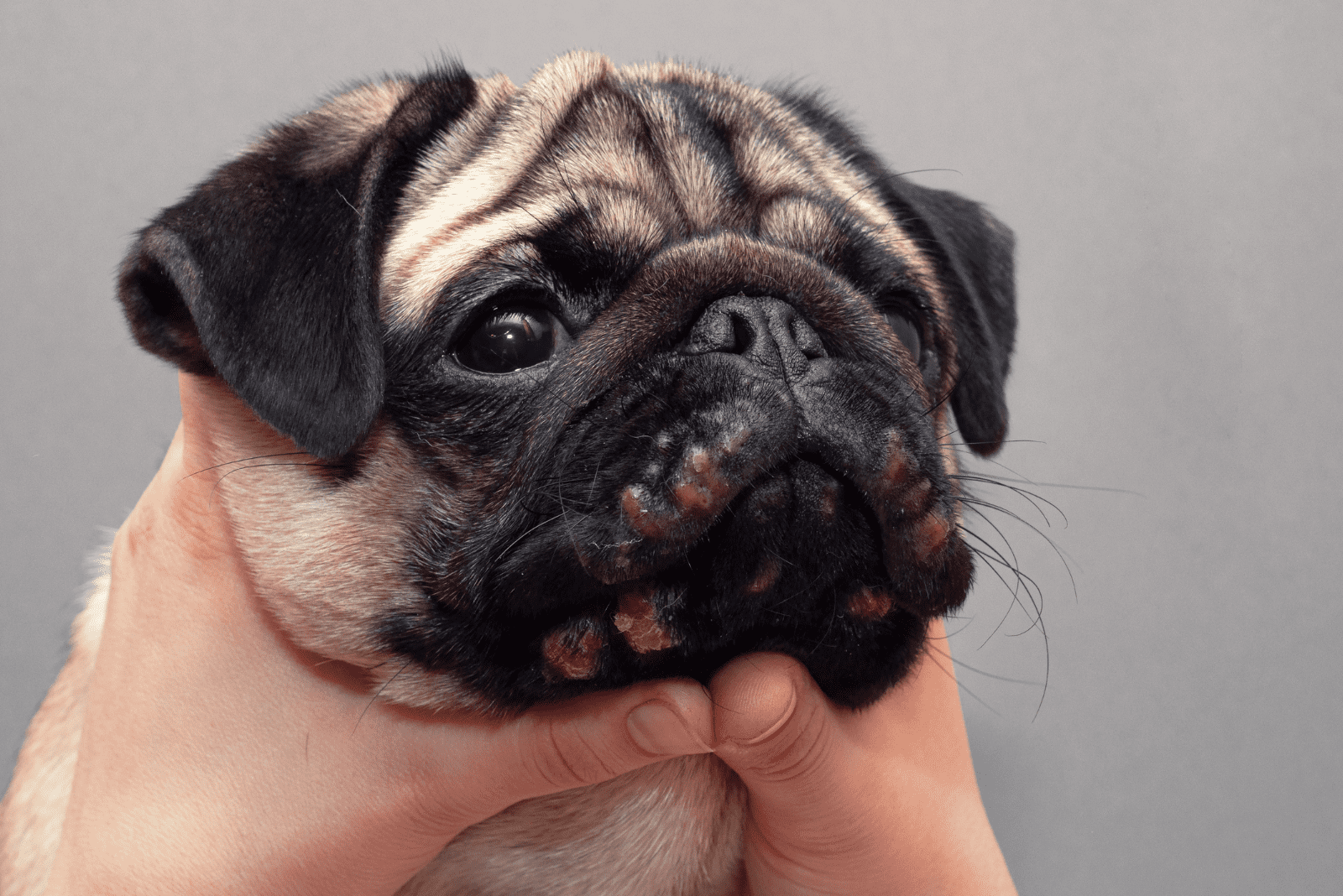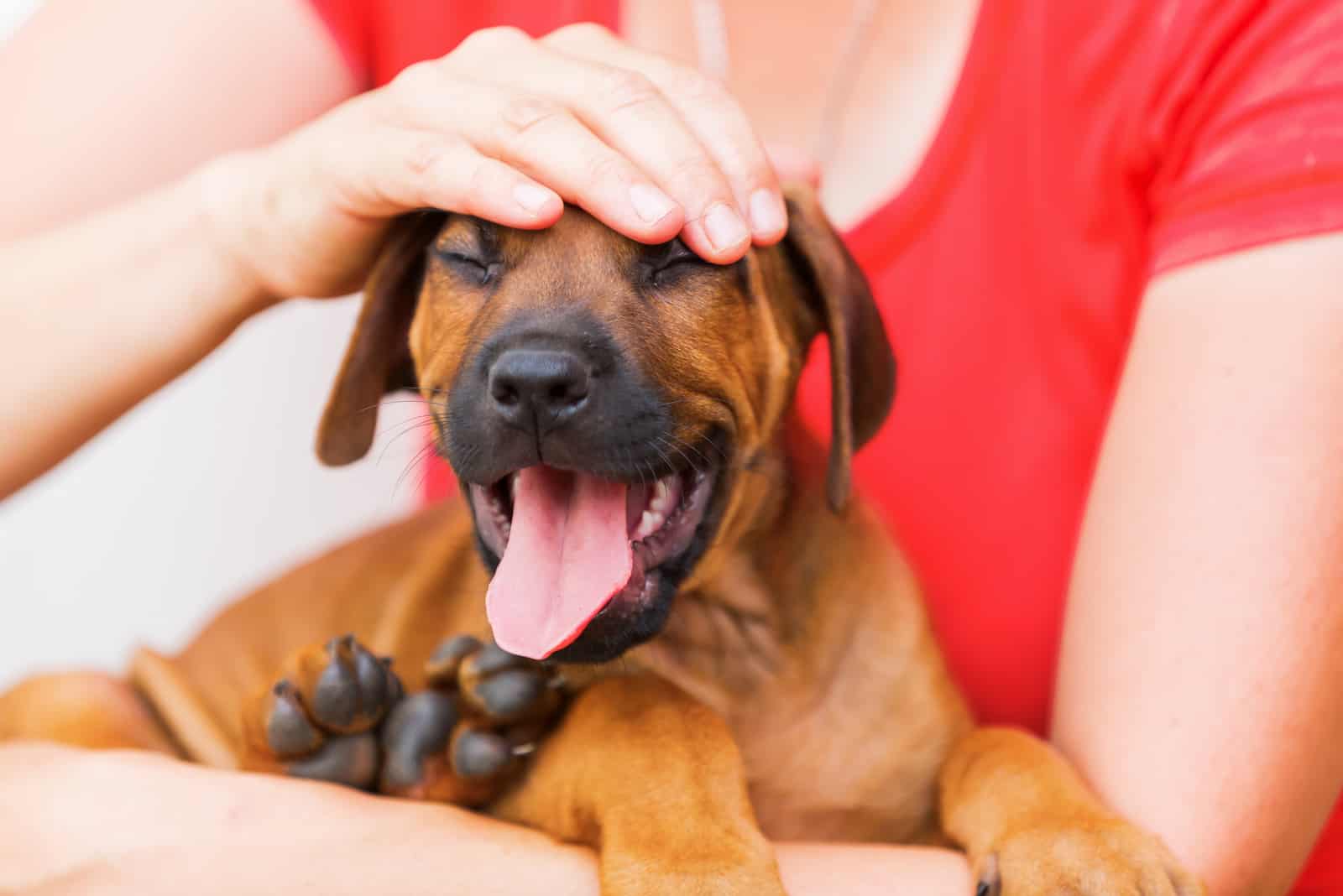We know you love your dog; he is your best friend! But everyone can get tired from cleaning up all that slobber around the house. It’s on the carpet, your favorite T-shirt, on your sofa — everywhere. They can’t help it. It’s not like dogs do it on purpose or they enjoy it. Excessive drooling is something a dog cannot control
There are many reasons why a dog’s mouth might produce so much saliva and cause all that trouble. Sometimes, the answer is simple, and it means it’s just one of those dog breeds that drool more. But occasionally other things might be causing it.
From injuries to stress, and all the things in between. But luckily there are many home remedies to help with excessive drooling, too. To be precise, we have a list of 13 home remedies for dog drooling. And a backup plan if nothing works. So, let’s get into it.
Home Remedies For Dog Drooling
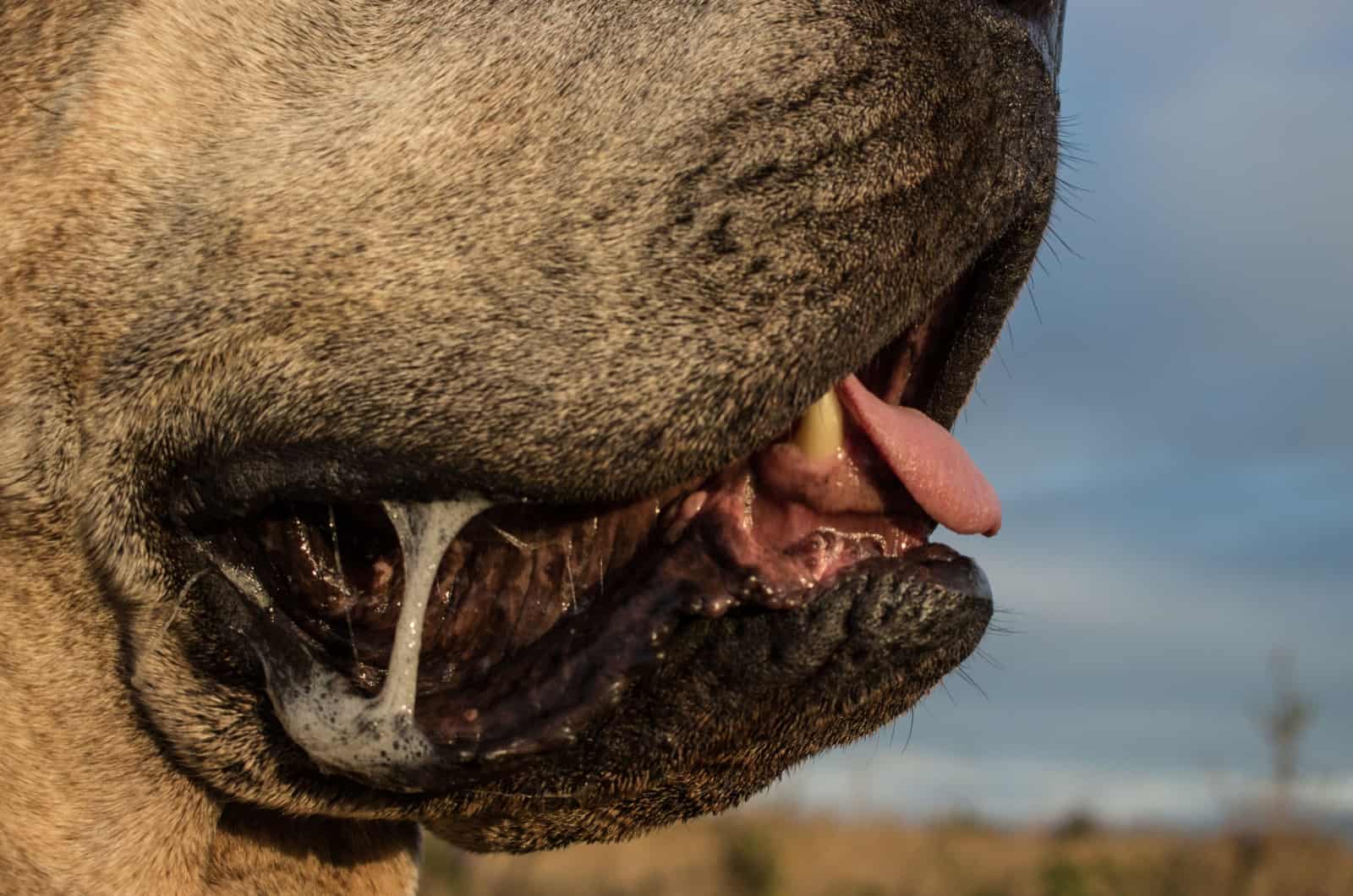
If you’ve decided you are going to try out home remedies for drooling first, you are in the right place. Some actions are easier to do, some require a little more patience or a special ingredient. But the important thing is that they are all achievable in our homes, without necessarily going to the vet.
Although you will see that we need to check the dog for more serious, underlying problems first, and then decide to treat the dog at home on our own. It is always a good idea to call your vet and ask a question not only about the possible drooling problem but about the remedy you are going to use.
The home remedies for dog drooling we are going to mention are harmless to any dog, no matter the dog breed. Informing a vet about a problem your dog has is important for your dog’s overall health.
An informed veterinarian is able to help you in time and with better outcomes when he or she knows everything your dog has been or is going through.
To successfully treat a problem, we must understand it first. You can’t fight when you are not sure what you are fighting against. So, first, we are going to understand what dog drooling is and when it’s a problem. And, then we will dive into 13 home remedies for dog drooling.
What Is Dog Drooling?
The official medical term for drooling is ptyalism or hypersalivation. It means an excessive production of saliva in the salivary glands. Dogs have four salivary glands — parotid, zygomatic, mandibular, and sublingual. They are located in a way that they surround the oral cavity of the dog. Salivary glands are an important part of digestion and the immune system in all mammals.
Saliva (made in the salivary glands) has an important role in forming a bolus — food that has been mixed with saliva and chewed, ready to be swallowed. Not only does saliva play an important role in the upper digestive tract, but it also plays a very important role in the immune system. The saliva of a dog contains proteins called histatins that defend the oral cavity, and through it, the whole body against infections.
Another amazing fact about saliva is that it has a beneficial effect on a dog’s dental health. In other words, it protects the teeth’ enamel against the harmful impact of bacteria that cause tooth decay and other dental and periodontal diseases. Periodontal is a term that means the tissue that surrounds the tooth.
When is the dog drooling a problem? It becomes a problem when excessive saliva interferes with your and your dog’s everyday life. If you can’t take your dog anywhere because he leaves a mark behind him like a snail, then it’s time to think about the reasons and solutions.
If you can’t even cuddle with your dog because of the drool — it’s time to seek out the solution and check out the home remedies for dog drooling.
We’ve already mentioned that the solution to the problem can vary depending on the problem that it’s causing it. Some home remedies can be very easy to do, and others need more time to have a proper effect.
Before we start talking about the home remedies for dog drooling, it is important to emphasize once again that the best solution for any dog-related problem that you are unsure how to treat is to take the dog to the vet or to call your vet to ask for an opinion.
1. Hydration
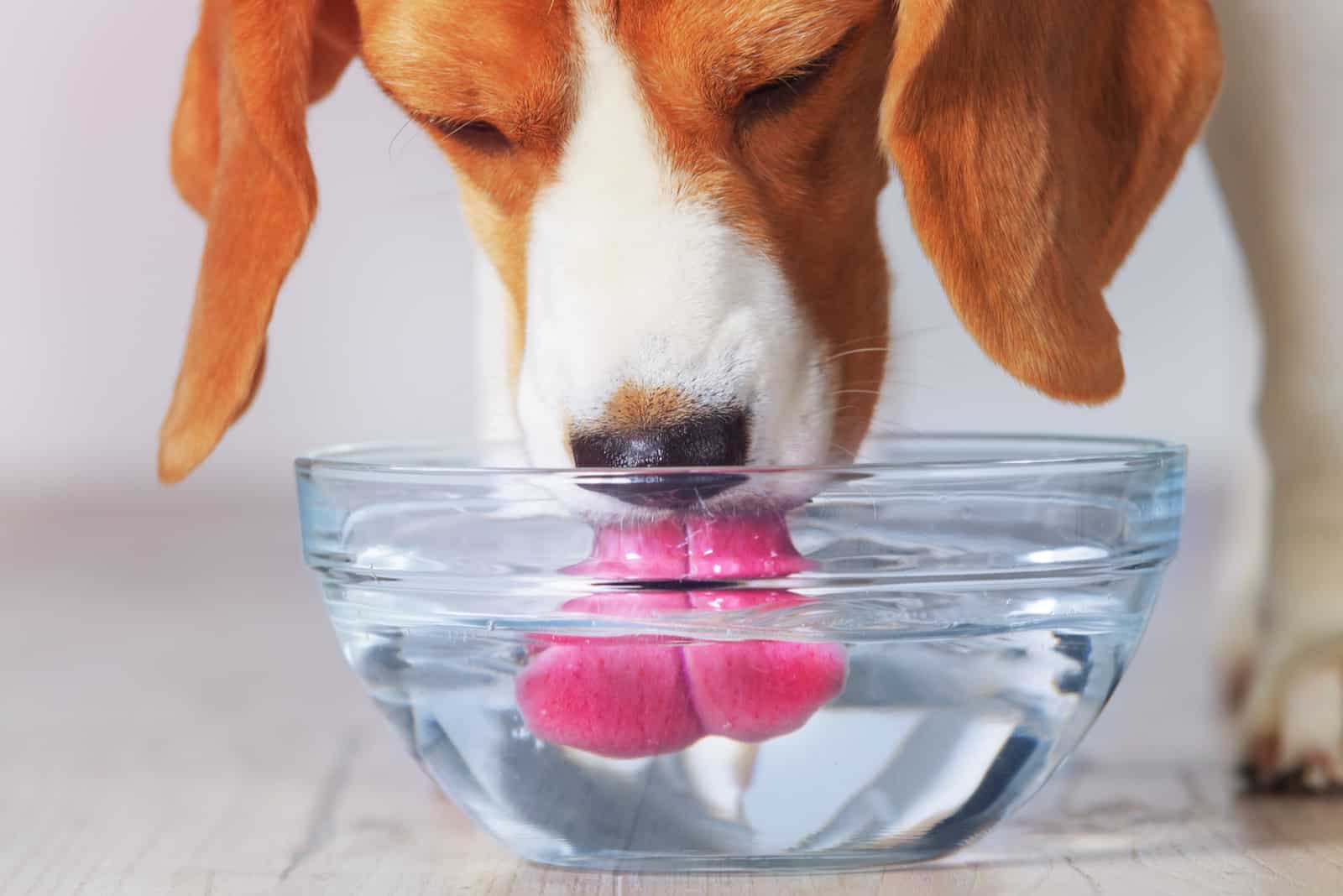
Every dog needs a daily intake of clean and fresh water. The average amount of water a dog needs daily is 30ml of water per kilogram of body weight. Of course, this depends on age, energy levels, dog activity, and if it’s a lactating female.
Younger dogs will drink more water than adult dogs. Also, a working dog that is active throughout the day needs more water too. As for a female dog that has puppies and is still lactating, she needs a higher daily water intake as well.
What does hydration have to do with drooling? The opposite of hydration has a lot to do with a dog drooling. It has been noticed that dehydration triggers a response from the organism to produce excessive saliva. This happens because the dog’s body tries to lower the temperature of the body by any means possible.
Because there is no available water, a dog’s brain sends a signal to the salivary glands to produce more saliva and try to cool the organism down through hypersalivation.
So, one of the best home remedies for dog drooling, especially during hot days is — hydration! A hydrated dog’s body will not trigger its brain to send SOS signals to the salivary glands to produce more saliva. Regular water intake means no dehydration — no dehydration means no overproduction of saliva.
Your dog has to have fresh water available at all times. No matter if it’s summer or winter, or you have a dog that has a certain medical condition (e.g. GVD or bloat), always give them the opportunity to drink water whenever they want to.
2. Exercise
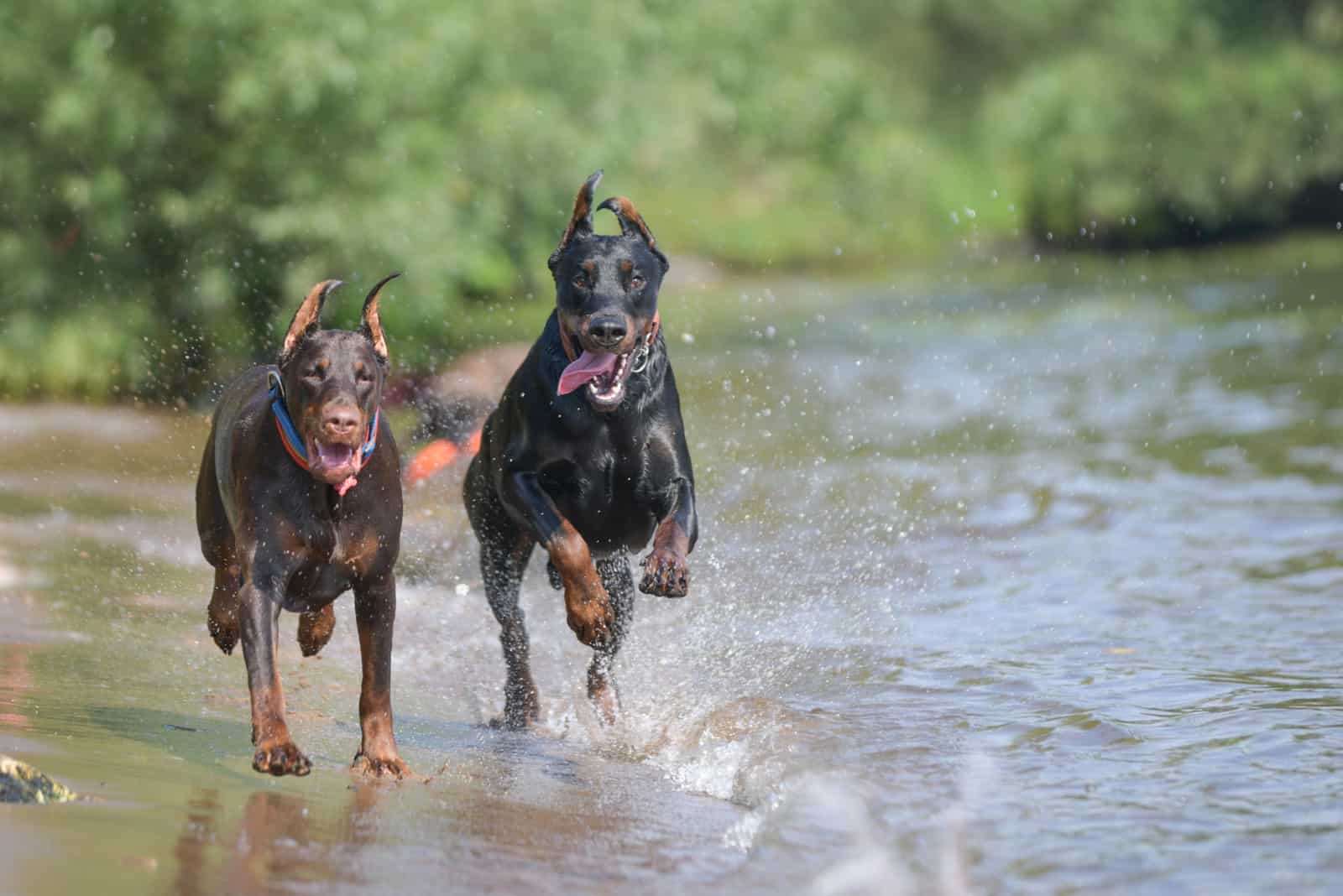
Dogs also drool if they don’t have a lot of daily exercise. The amount of exercise varies. Not all dogs need the same amount of exercise, and you need to check with your vet about what kind of exercise is the best for your dog and how often they should exercise.
But, if you have a dog that is not active and keeps on drooling, it is time to take your dog for a walk. If it’s refusing to walk, there are tips and tricks to use. It has to be a more active type of walk because your dog doesn’t have a lot of opportunities to be active, it can start drooling excessively.
So, play with your dog, run, go on a hike, or play catch — whatever it takes to make your dog more active. Exercise will help your dog feel more relaxed and reduce the stress that can be one of the reasons behind hypersalivation.
The amount of exercise, as well as the type, depends on your dog’s age and, most importantly, on your dog’s breed. The amount of exercise is not the same for a Frenchie and a Border Collie. There are dog breeds that have certain genetic and breed-related physiological and anatomical induced difficulties that make them unable to run around for a long time.
Talking to your vet can help you decide what is the best option when it comes to the daily exercise of your dog. That way you can be sure you are doing the best for your dog, and you are ensuring there will be no injuries or possible health problems during and after the exercise.
But, when you do find out the best option, it can help you with the drooling and you can put exercise on the list of home remedies for dog drooling. Your dog will be fit and drool-free.
3. Chewing
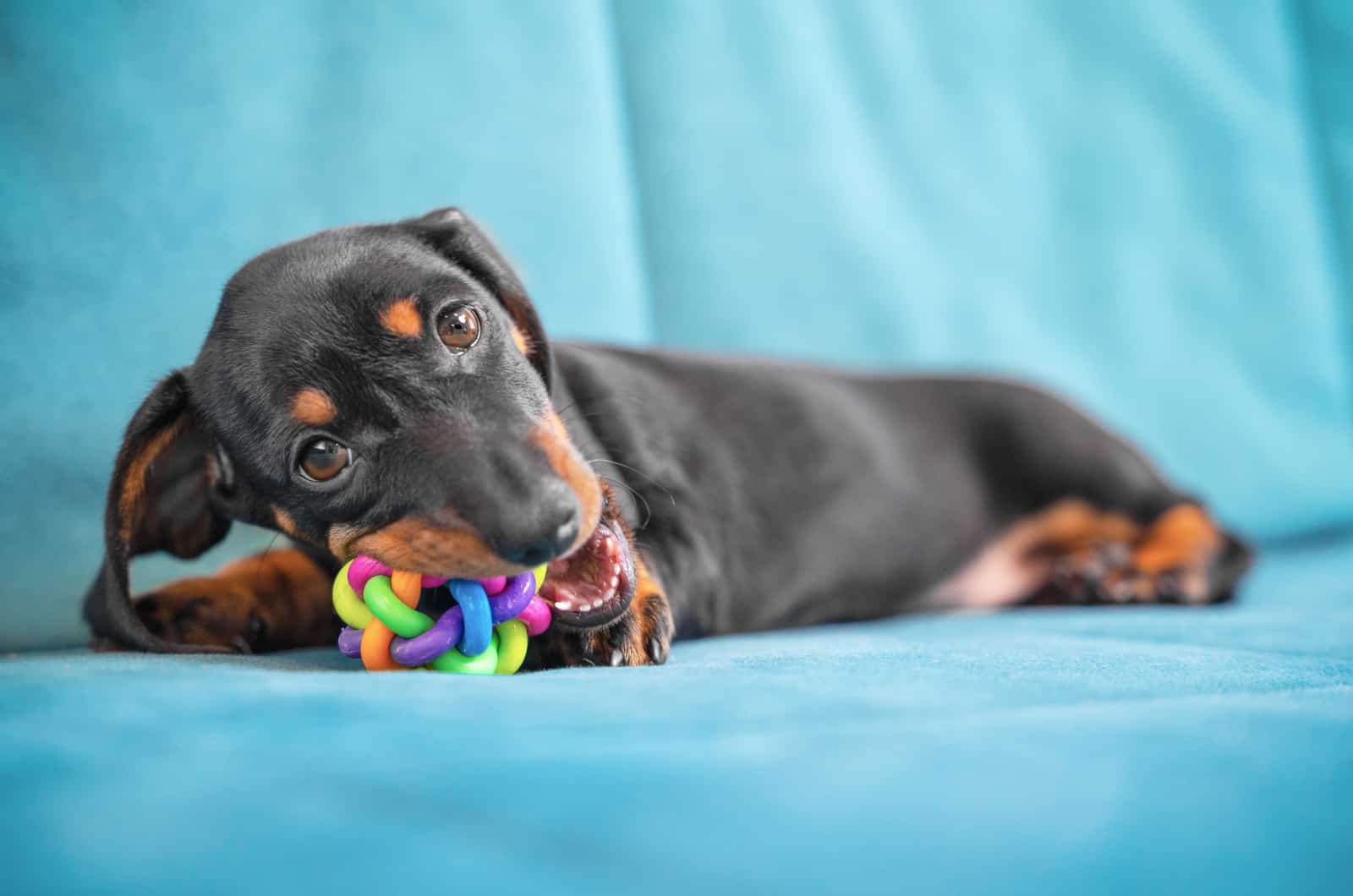
Breathing through the mouth causes the oral mucosa to become dry. You can try it on your own. Open your mouth and take deep breaths through it for a minute (even less — a couple of seconds) and you can already feel the effect on the tongue and gingiva (gums).
This is how chewing can help your dog, too. We can’t just make our dogs stop breathing through the nose and start breathing through the mouth. We have to “trick” them and use alternative methods. One of those methods is chewing a stick or any other object that is not harmful to your dog.
Give your dog a new treat to chew and focus its brain on it. They have to have an open mouth to chew, and they breathe through their mouths when they chew things. So, they will get distracted, their teeth will have a good natural clean-up, and the hypersalivation will decrease.
It’s one of the easier home remedies for dog drooling. All you need is a local shop or you can buy a chewing toy online. Give it to your dog, leave it alone and watch what happens. You can even leave your dog with some interactive toys when you go to work.
Another reason for less salivary secretion during chewing is the fact dogs use their tongues more often during it. Licking the chewing stick or chewing toy makes them swallow more often, removing the excessive saliva. Also, chewing reduces stress, one of the reasons for excessive dog drooling.
4. Chamomile Tea
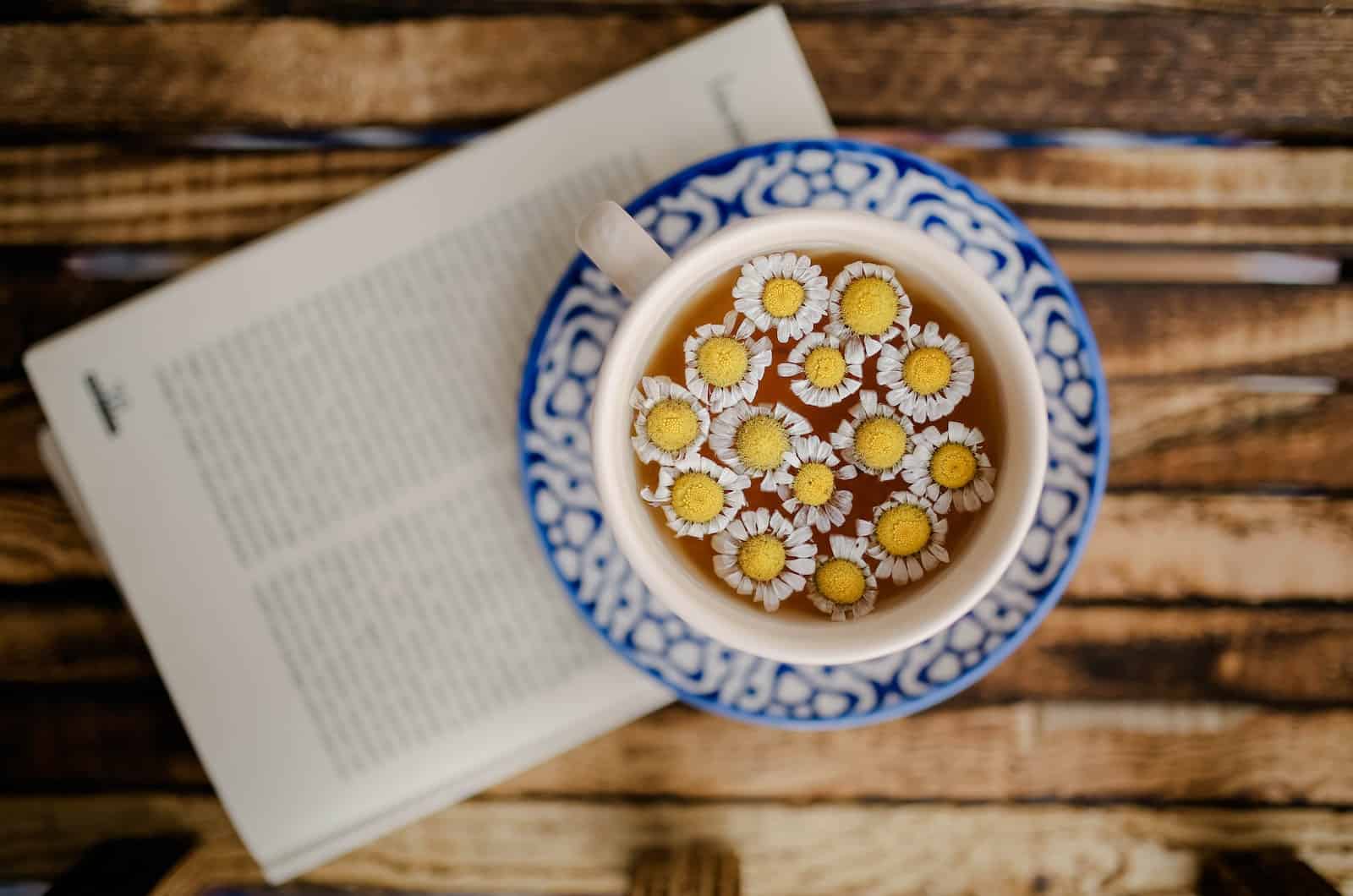
Chamomile is a plant that looks like a daisy, and it is well known for its beneficial effects on the human body, and animal body as well. Chamomile tea is safe for your dog. You should give one milliliter per 13kg of the dog’s body weight every couple of hours. Be careful to buy pure dry chamomile, and not the tea bag version.
The reason for that is that the tea bags we use contain other herbs that can be harmful to a dog. So, the best option is to buy pure chamomile tea that is not pre-ground and packed in a tea bag.
Also, always wait for the tea to cool off for a while, and then give it to your dog. The chamomile will have several effects on your dog’s body:
• calming effect
• stops excessive saliva production
• calms the upset digestive tract
In general, the calming effect is the reason behind the reduction of saliva production. We will talk about the possible answers “why is my dog drooling later”, but one of the most common reasons is stress. So, calm your dog by giving him small amounts of homemade chamomile tea.
How To Make Chamomile Tea?
First, check the local stores for dry chamomile. As we mentioned, pre-ground and pre-packed tea bags contain all kinds of other herbs mixed together with chamomile. Those other herbs can have a harmful effect on your dog’s health and cause more problems than actually help.
Once you buy dry chamomile you can start making your own home remedies for dog drooling. How to do it:
1. Boil water
2. Add a teaspoon of dried chamomile to the teacup
3. Pour boiling water over the chamomile
4. Let it steep (soak) for 4 to 5 minutes
5. Strain the tea
6. Wait for a couple of minutes for the tea to cool off
Chamomile tea has a strong effect on the inflammatory process by calming inflammation and helping the immune system. If chamomile tea does help your pooch drool less, some sort of local inflammation might have been the cause for the excessive drooling. You can check the oral cavity of your dog on your own or take the dog to the vet just to be sure.
5. Coconut Oil

Another excellent solution that has an anti-inflammatory effect is coconut oil. Coconut oil is one of the home remedies for dog drooling because of its soothing effect on the oral mucosa. Similar to chamomile tea.
Coconut oil is safe to give to your dog, but you have to be careful how much you give to your dog on a daily basis. If it’s a large dog, which is a common dog type when it comes to the problem of excessive drooling, you can give it 1 tablespoon a day. If it’s a small dog then 1/4 of a teaspoon daily is the appropriate amount.
Always start with smaller amounts of coconut oil. After that, give your dog more coconut oil, but always be careful not to go above the recommended dose for a dog.
How Can Coconut Oil Help Reduce Hypersalivation?
Coconut oil is a good booster for the immune system. If your dog has an inflammatory process in its mouth, then hypersalivation is a response to such a problem. Because saliva has anti-inflammatory ingredients called igA (Immunoglobulin-A), hypersalivation is a response to an inflammatory problem in the oral cavity.
Coconut oil helps fight bacteria or any other cause that has led to an inflammatory process. One of the ingredients responsible for the fight is vitamin E. But, it is important to remember that Coconut oil is rich in fat as well.
Because of it, we have to be careful of the amount we give to our dogs because if we give them too much coconut oil, they can gain weight.
6. Thuja

This is an evergreen tree that can help remove warts in a dog’s oral cavity. The other name is the white cedar tree. Warts cause bumps in a dog’s mouth that can be unpleasant or painful. The unpleasantness or pain caused by these warts stimulates the salivary glands to produce more saliva to help relieve the pain and fight the problem. That’s how excessive drooling begins.
Thuja can be one of the home remedies for dog drooling if your dog has wart problems. To be sure your dog has wart problems, you need to check the mouth. You can take the dog to the vet or try to examine the dog’s mouth on your own.
What Do Warts Look Like?
They are round and they look like cauliflower that grows in clusters. The most common areas they appear are:
• gums
• tongue
• on the lips
Warts (or papillomas) do not cause pain until they get infected. Once they get infected, they can be painful to your dog. That is when hypersalivation begins.
If your veterinarian doesn’t recommend surgical removal of warts, or at the moment you are unable to do so, you can use thuja as a solution to excessive salivation.
7. Ginger
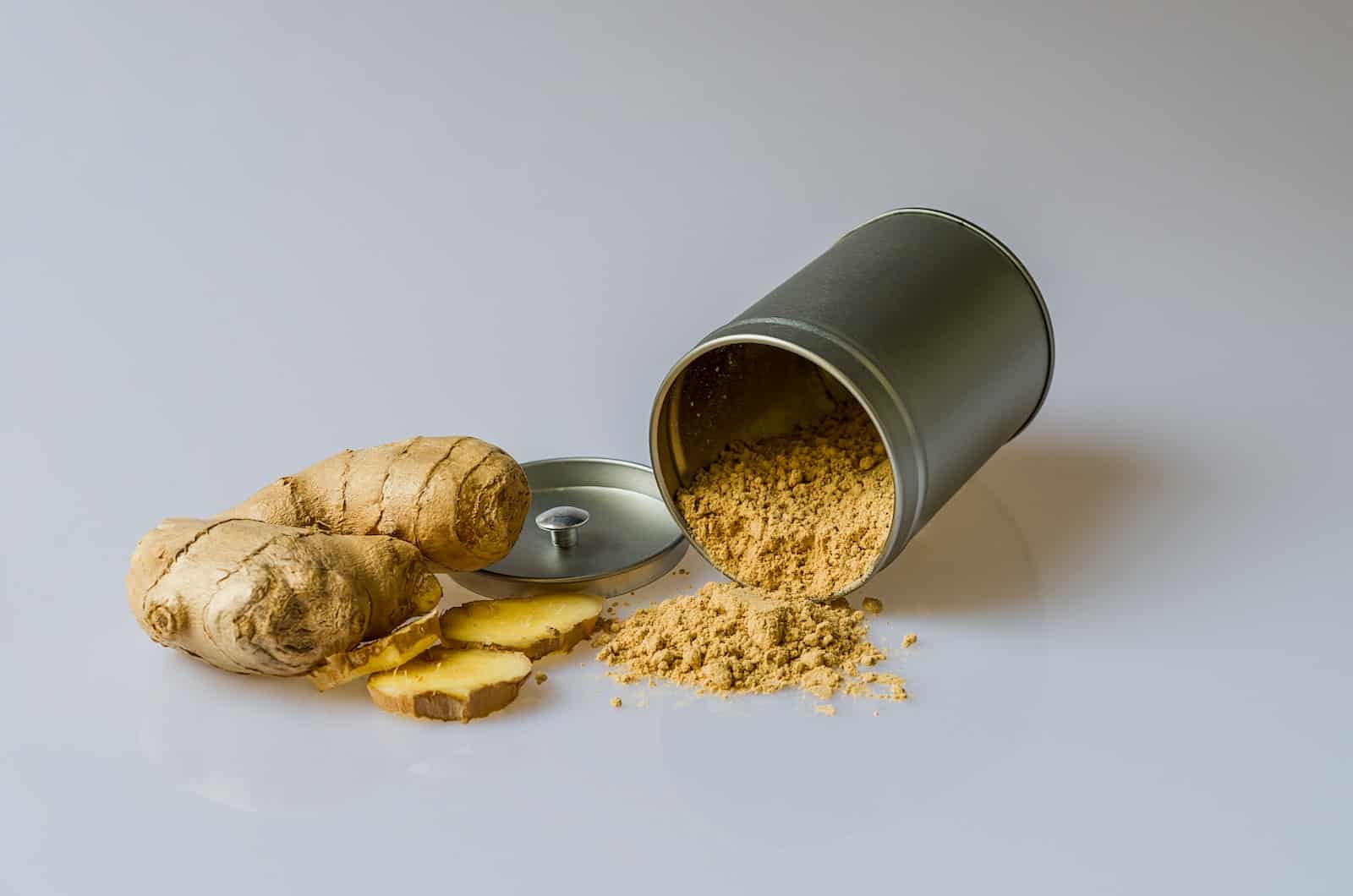
If your dog excessively drools when you are in the car, then motion sickness can be a reason behind too much drooling. Nausea caused by being still in a moving object can be one of the causes of excessive drooling.
You can help your dog by giving him small amounts of anti-nausea home remedies. Ginger is the solution. It actually has the same effect on dogs as Dramamine has on humans. It makes them calm, and sleepy and reduces the nauseous feeling.
So, whenever your doggo starts to feel motion sickness, to stop the drooling and possible dog vomiting, you can give your drooler a bit of ginger. You can give the dog some fresh ginger before the car ride.
Dogs that weigh more than 35 pounds can eat three-quarters of a teaspoon of fresh ginger. Dogs that weigh from 10 to 35 pounds should have one-half of a teaspoon, and small dog breeds such as Frenchies or Chihuahuas should have no more than one-quarter of a teaspoon.
Not only will ginger help reduce drooling, but it can also indirectly help with the upset stomach because it relaxes the dog and makes the travel more bearable. You can buy ginger at any local store or supermarket.
8. Oral Hygiene
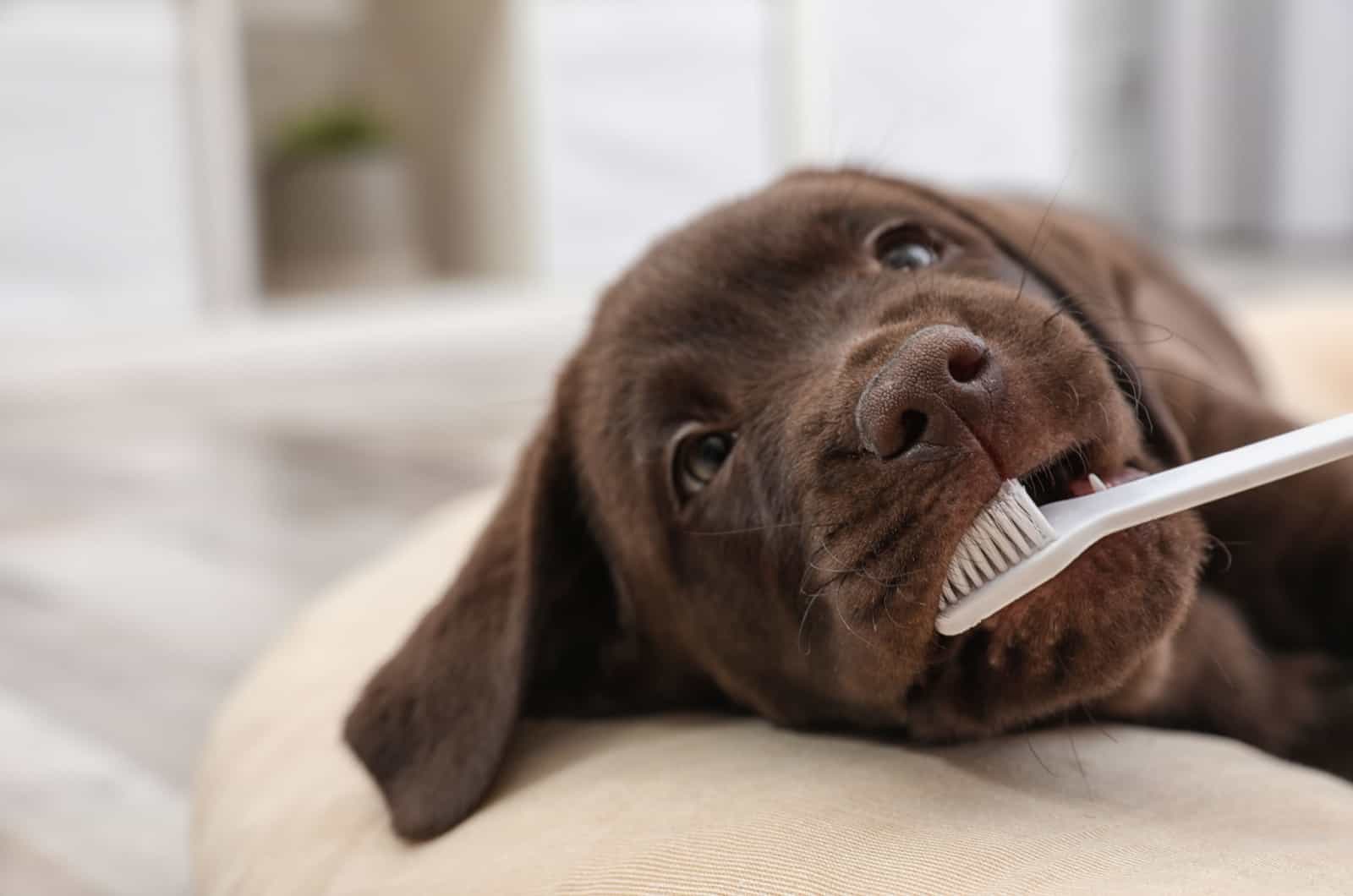
This is another simple type of home remedy for dog drooling. Keeping the oral hygiene of a dog on a satisfactory level is imperative when it comes to overall canine health. This remedy goes hand in hand with the chewing remedy.
Dogs can keep their teeth clean on their own by chewing hard objects. That’s why it is important for your dog to have chewing toys or sticks to help them with oral hygiene. The amount of drool coming from your dog’s mouth can be significantly higher if the dog has dental problems. Not only dental but health issues with the entire oral cavity.
But, if your dog can’t clean their teeth through regular chewing, because of various reasons, we can step in and do the job for them. Depending on the dog’s breed, size, and age, there are numerous toothbrushes and toothpaste options available.
Choosing a Brush and a Paste
If you are not sure, you can always ask a professional — your vet. They can give you all the information needed, precisely for your dog’s condition as well as the list of approved products. But, you can’t make a mistake if you try out the finger brush. Not only are you going to clean the dog’s teeth, but you are going to massage the gingiva (gums) too.
When it comes to toothpaste, never use toothpaste for people! It can be very dangerous for your dog. There are special dog toothpaste types available in every pet shop or you can always order one online.
When you buy a product that comes into direct contact with your dog’s oral mucosa, always check if that product is approved by a doctor of veterinary medicine (DVM).
Brushing your dog’s teeth two times a day is the best option. It can help relieve the dental problems your dog might have and reduce drooling. Also, if you want the best results, brush your dog’s teeth for 2 minutes each time.
Dental problems are one of the most common underlying causes of excessive drooling. If your dog has bad breath, drools a lot, and avoids eating kibble dog food then it is time to take the dog to the vet so that they can solve the possible dental disease.
9. Reduce Stress
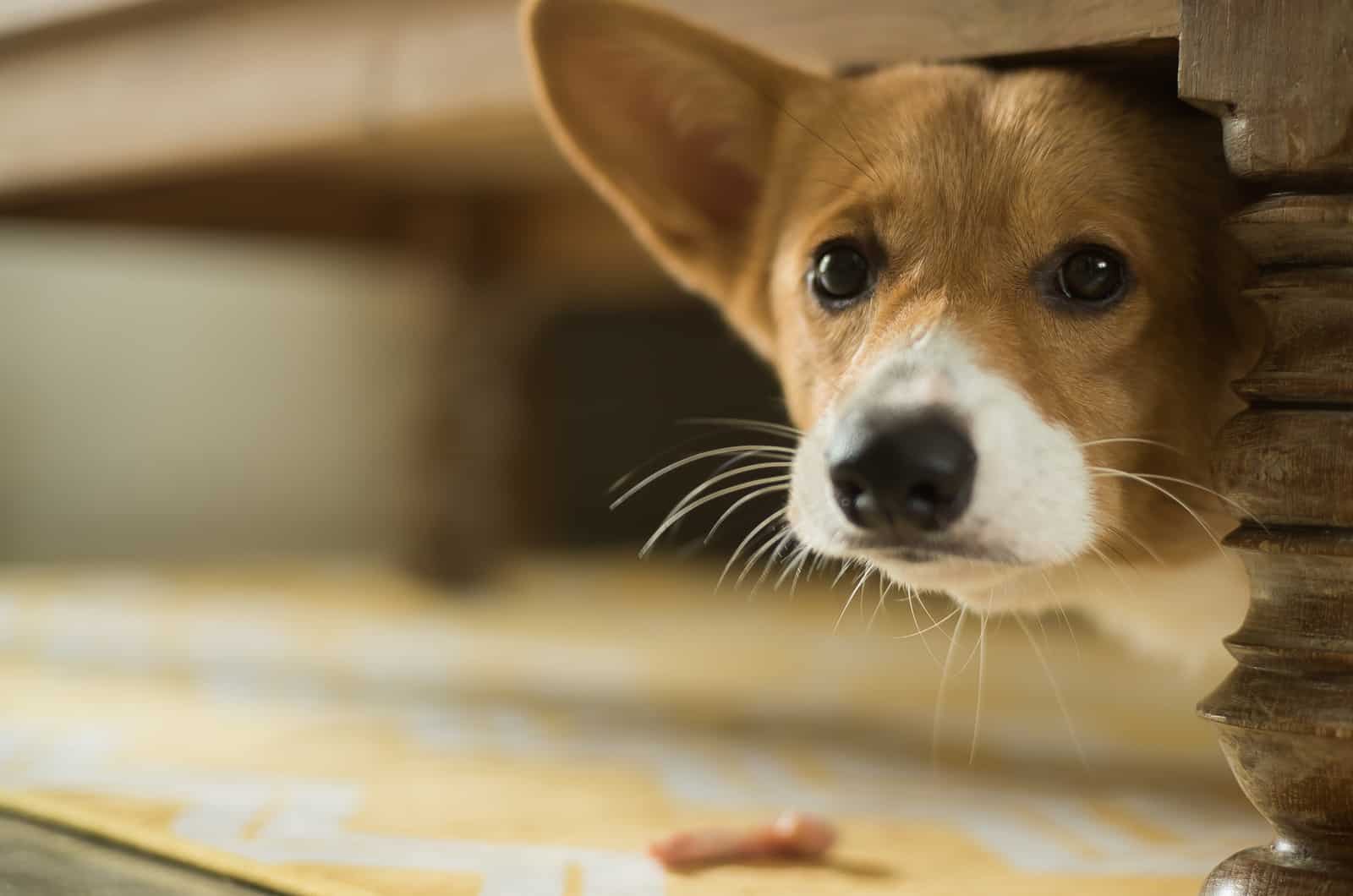
Stress is one of the reasons your dog might drool a lot lately. Dogs are not very easy to read and sometimes their actions can be misleading. Who would suspect that excessive drooling can be a reaction to something stressful happening in your dog’s life?
Drooling is a reflexive action that cannot be controlled consciously. It is connected to the dog’s brain and the brain is the one sending signals about how much saliva needs to be produced. Sometimes, the brain can send signals to produce more saliva because the dog is under a lot of stress.
Drooling is a form of reaction to a stressful situation. If you want to be sure it is not something else, pay attention when drooling occurs. If it happens when you want to take the dog to the vet (and the dog doesn’t like it) or you take a shy dog to a new environment, then stress-caused drooling is at hand.
Stress can cause other health issues and changes in behavior, not only excessive drooling. If your dog suddenly starts to poop in the house, stress might be the cause.
Numerous situations can lead to stress. Change of environment, moving from one place to another, change of food, feeding schedule, walking schedule, etc. As pet parents, we are well aware of what situations might cause stress reactions or anxiety in our doggies.
Pay attention to those changes and pay attention to when drooling starts. When you know the situation that causes stress you can help reduce drooling by avoiding that situation or reducing it to a minimum.
Possible Stress Triggers
No matter if it’s a large dog or a small dog, all dogs can have a stress reaction. Sometimes, that reaction manifests as excessive drooling. Other times it can be a dog that acts weird all of a sudden. Knowing the stress triggers and dealing with them is an excellent version of home remedies for dog drooling.
Possible stress triggers:
• Noises
• New (unfamiliar) places
• New (unfamiliar) scents
• New (unfamiliar) people or other dogs/animals
• Moving from one home to another
• Separation anxiety (leaving your dog alone at home)
• Change in schedule
• Adding a new dog/other pet to a household
10. Remove Possible Irritants
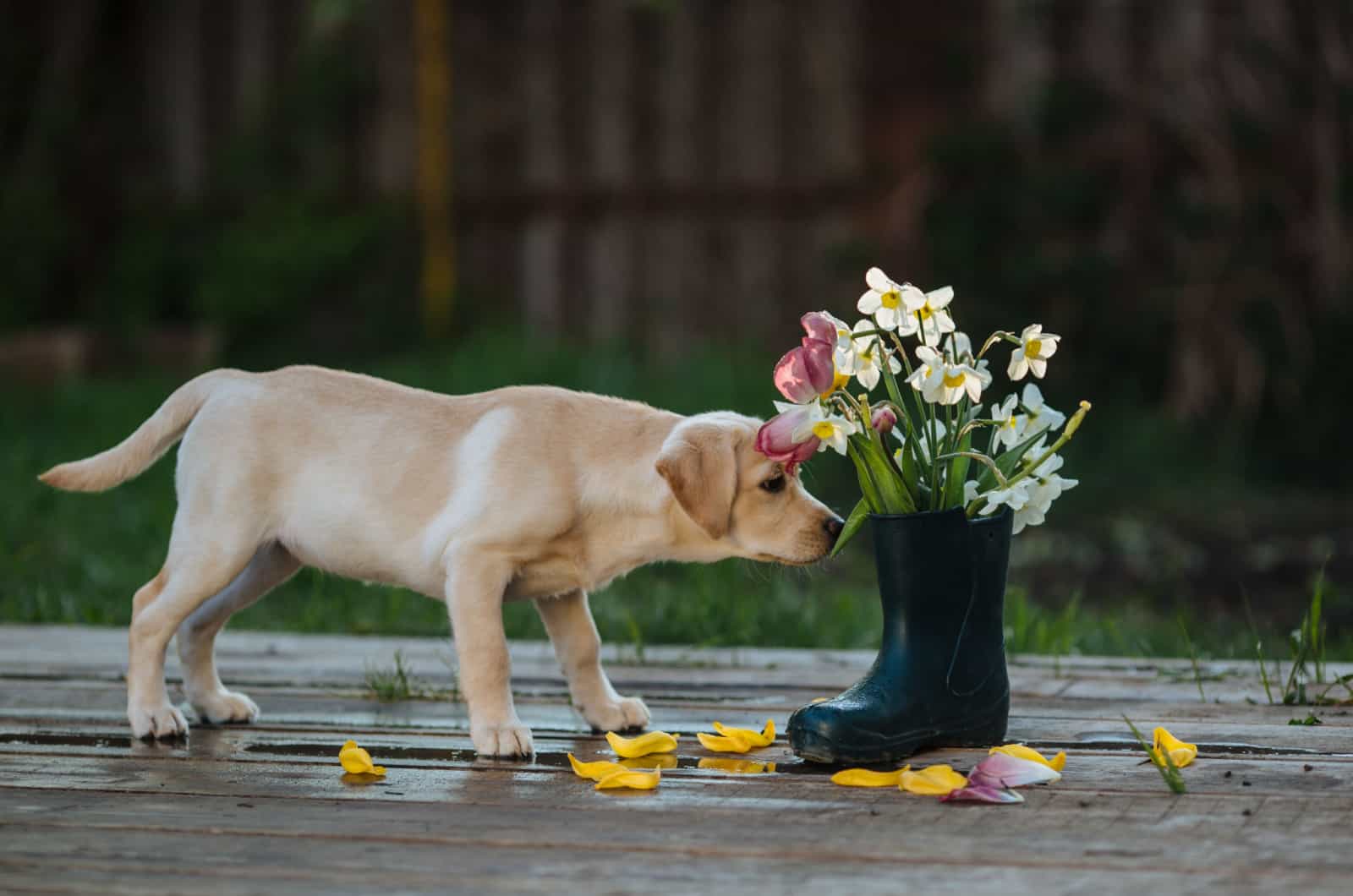
Dogs are curious creatures, and they love to sniff around and eat a lot of things, including things they shouldn’t eat. No matter how hard we try, we cannot keep an eye on them 24 hours a day, every day. They are fast!
So, if your dog suddenly starts to drool excessively, and you don’t know what the problem is, or the drooling stops and starts again after a while — you might have an irritant at home that is causing the excessive salivation in your dog.
If the dog only took in a small amount of the possible irritants, then the reaction will be drooling. Larger amounts lead to stomach problems or Gastrointestinal problems (GI) like vomiting or diarrhea.
If you notice your dog is throwing up white foam, refuses to eat, or has low energy, you should take your dog to the vet immediately.
Possible irritants include:
• house plants
• cleaning supplies (caustic agents)
• human food toxic for dogs
11. Check For Foreign Objects
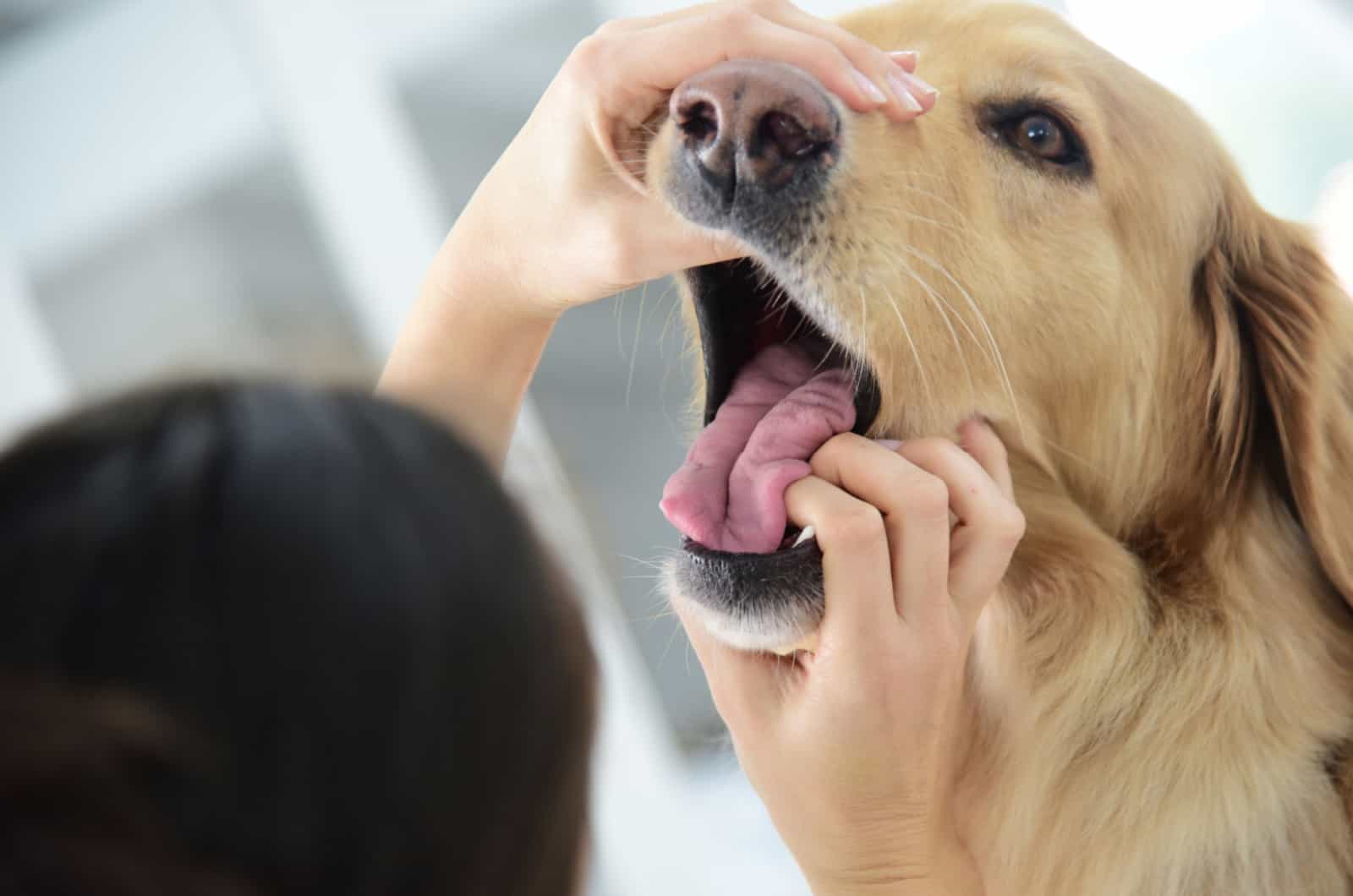
Before you decide to use chamomile tea or coconut oil, or any other type of home remedy for dog drooling we have mentioned — pay attention to what is inside the dog’s mouth.
A common cause of excessive drooling that happens suddenly is a foreign body or a mouth injury. Dogs can get injured by chewing hard food.
Pieces of chicken or any other type of animal bones can become brittle and can splinter after frying or cooking. Especially after frying. That’s why you should never feed your dog fried chicken bones.
Splintered bones can wedge in the gingiva and cause acute localized gingivitis. The body’s response to this type of problem is excessive salivation in order to remove the foreign object.
If you notice a foreign object in your dog’s mouth, you can try and use tweezers to get it out, but it is highly recommended to take the dog to the vet immediately.
12. Check For Abnormalities
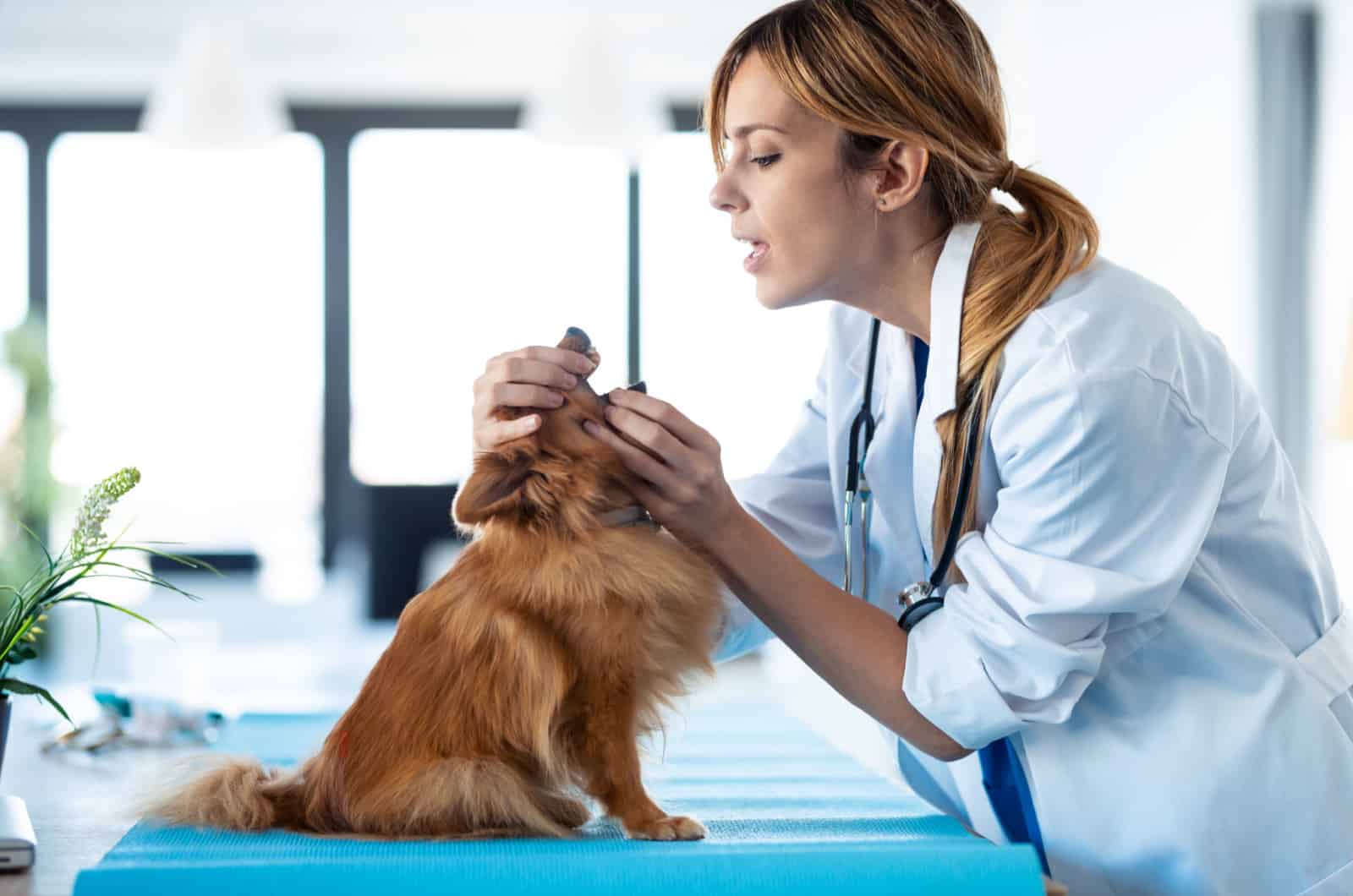
This is a checkup that goes together with checking for foreign objects. You can take a look at your dog’s oral cavity and see if there are things that just seem odd. Once again, taking your dog to a vet is the safest way to ensure your dog is treated correctly and on time.
But, if you want to take a peek first, there are things you can pay attention to. Serious health conditions like tumors or less serious but very painful ulcers can be seen by a routine checkup.
Any discolorations of the gums or changes in a growth can be a red flag. If you notice any changes in color in your dog’s oral soft tissue (gums) and tongue, take the dog to the vet. It might be nothing, but it also can mean something very serious.
13. If Nothing Helps

If you checked your dog’s mouth, took him to the vet, and you tried all of the home remedies for dog drooling we recommended and nothing helps, then you have to work by the rule — if you can’t beat them, join them.
That means making your life and your dog’s life as comfortable as possible. You can buy a dog bandana that can soak up the excessive saliva. You can cover your furniture with sheets so that you don’t have to clean your sofa all the time.
And never stop looking out for possible reasons. Remember, stress is something that can cause a lot of problems, and the stress trigger can’t always be that easily recognized.
So, keep your eyes open, arm yourself with towels and cloths, give your doggo a lot of sticks to chew and water to drink, and try to enjoy what you’ve got.
We are certain your dog is worth all the drooling, no matter how annoying it can be.
Reasons For Dog Drooling
Even though we talked about some of the possible reasons behind excessive salivation, and while we talked about the home remedies for dog drooling, there are many more reasons. Most of these reasons are serious health conditions that dog owners cannot deal with on their own. Professional help is needed.
But, nonetheless, here is a list of the most common reasons for dog drooling:
• Mealtime Reflex
• Dog breed
• Oral Injuries
• Dental Problems
• Teething in puppies
• GI Problems
• Heatstroke
• Cancer
• Seizures
• Kidney Disease
• Obstruction of esophagus
• Problems with the sinuses
• Tartar Buildup
• Allergic Reactions — Irritants
• Medication
• Throat Problems
• Excitement
Dogs Prone To Drooling
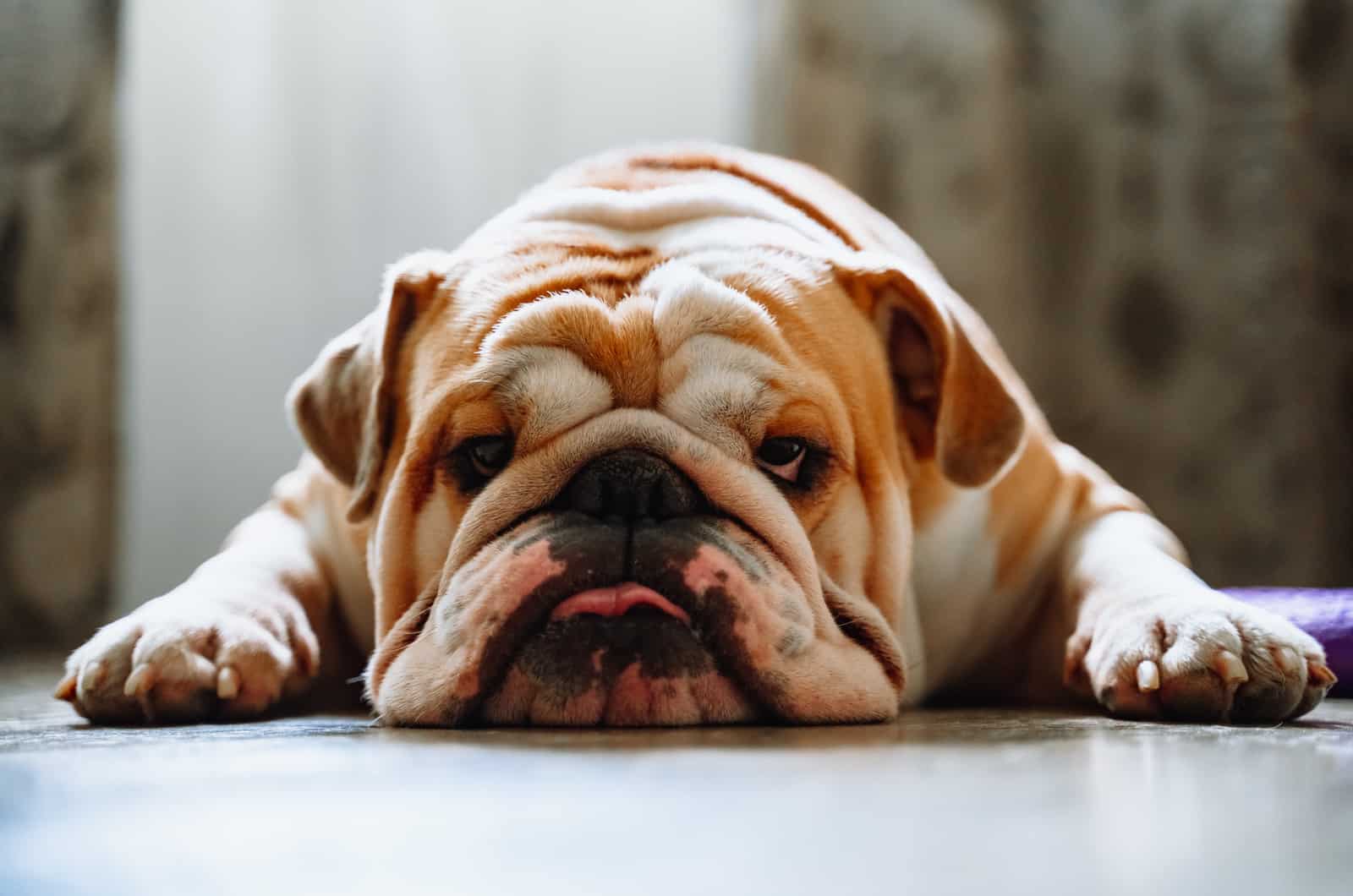
There are some dog breeds that are more prone to drooling than other dog breeds. This problem is most common in large dog breeds, but it can be a problem for smaller dog breeds, too.
Some dogs are more prone to this problem because of their anatomy — they have drooping jowls, and lips that have little effect on stopping the saliva from leaving the oral cavity.
Dog breeds prone to drooling are:
• Mastiffs
• Bulldogs
• Presa Canario
• St. Bernard
• Bloodhounds
• Newfoundlands
• Bloodhounds
• Great Danes
These are amazing dog breeds, but if you know drooling is going to be a problem for you or for any member of your family, it is best to choose a dog breed that is less prone to drooling.
The Conclusion
The reasons for dog drooling are many, and often require help from a professional. We can be there to notice when things change, but serious health problems like tumors or more serious injuries, cannot be solved with home remedies for dog drooling.
But luckily there are many ways to deal with drooling. Because not everything is always life-threatening, and we can deal with it on our own at home. As a dog owner, we know your dog’s health comes first. That means regular vet checkups and observing your dog’s behavior to see when drooling happens.
If it’s a behavioral thing connected with the Pavlov reflex (mealtime reflex) then some dog training can do the trick. Other times home remedies for dog drooling include reducing stress, playing with your dog, or simply making a cup of tea for your doggo.
Whatever the underlying problem is, I am sure these home remedies for dog drooling will be beneficial to your dog’s health.
Read Next:
• How To Treat A Limping Dog At Home? First Aid Help Guide
• Should You Know How To Heal Dog Prolapse At Home?
• How To Treat Dog Ear Hematoma At Home: 5 Best Ways

